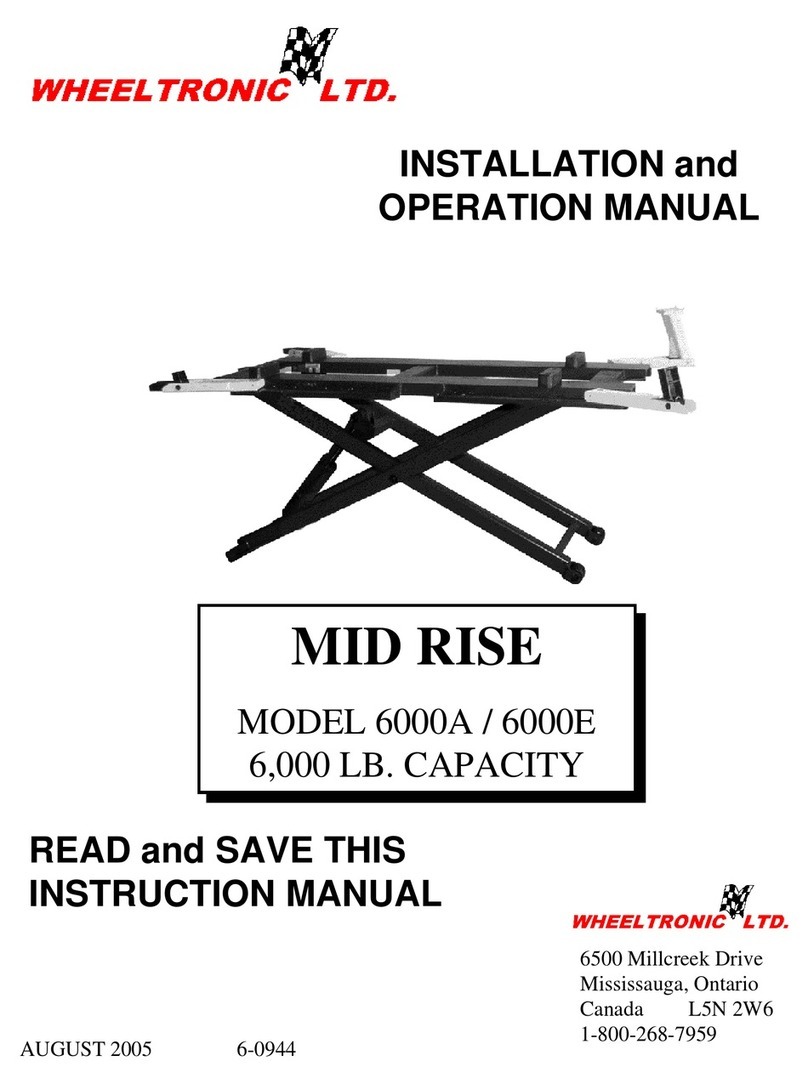
2 of 31
TABLE OF CONTENTS PAGE
1IMPORTANT SAFETY INSTRUCTIONS........................................................................3
2SAFETY WARNING DECALS...........................................................................................5
3SPECIFICATIONS...............................................................................................................6
4CONTENTS...........................................................................................................................7
5TOOLS REQUIRED FOR INSTALLATION:..................................................................8
6INSTALLATION INSTRUCTIONS...................................................................................8
6.1 BAY LAYOUT................................................................................................................9
6.2 UNPACKING PROCEDURE.....................................................................................10
6.3 HYDRAULIC INSTALLATION................................................................................10
6.4 ELECTRICAL INSTALLATION..............................................................................11
6.5 MECHANICAL SAFETY INSTALLATION............................................................12
6.6 REAR TIE BAR INSTALLATION............................................................................14
6.7 LEVELLING PROCEDURE......................................................................................14
6.8 ANCHORING PROCEDURE:...................................................................................15
6.9 INSTALLATION FOR ALIGNMENT MODELS 9004, AND 9005.......................16
6.10 INSTALLATION FOR ALL MODELS.................................................................17
7OPERATING INSTRUCTIONS:......................................................................................17
7.1 RAISING THE LIFT:..................................................................................................17
7.2 LOWERING THE LIFT:............................................................................................18
8FINAL CHECK OF ASSEMBLED LIFT........................................................................19
9OPERATION TEST WITH VEHICLE............................................................................19
10 RECOMMENDED MAINTENANCE:..........................................................................20
11 PARTS MANUAL ...........................................................................................................21
11.1 SPACE SAVER ALIGNMENT...............................................................................21
11.2 SPACE SAVER ALIGNMENT MAIN FRAME ASSEMBLY - PART LIST....22
11.3 SPACE SAVER SERVICE & RUST PROOFER..................................................24
11.4 SPACE SAVER MAIN FRAME ASSEMBLY, SERVICE & RUST PROOFER25
11.5 SPACE SAVER OPTIONS......................................................................................26
11.6 SPACE SAVER - OPTIONS PART LIST..............................................................27
11.7 SPACE SAVER HYDRAULICS .............................................................................28
11.8 SPACE SAVER - HYDRAULICS PART LIST.....................................................29
11.9 9,000 LB SPACE SAVER POWER PACK.............................................................30
11.10 9,000 LB SPACE SAVER POWER PACK - PARTS LIST..................................31




























